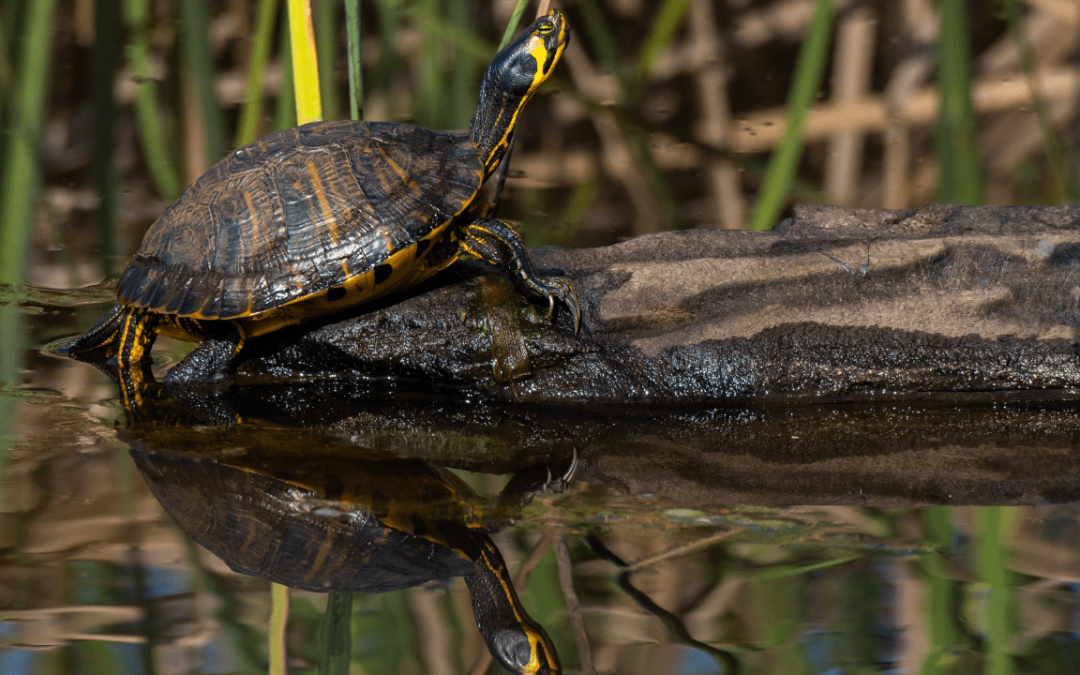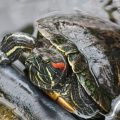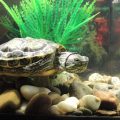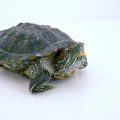Table of Contents
Red-Eared Sliders are small-sized, fun, and very amusing turtles famous for their unique pattern manifested throughout their body. It also has a very docile personality that makes them a great choice for a beginner pet turtle. Regardless of who turtle enthusiasts you might want to ask, they will all answer that Red-Eared Sliders are some of the most active and interesting turtles there are. And that they are a great first choice or addition for those who are leaning on exotic pet care.
Diet and Feeding Pre-requisite
Knowing what and how you can correctly feed your red-eared slider is extremely vital, as a proper diet accounts for it to live longer and lead a healthier life, free from any health complications. These turtles thrive well in a combination of high-quality commercial turtle food and the occasional add-on of fresh foods.
List of fresh foods you should consider adding to your turtle’s diet:
- Certain variations of leafy greens, including red or green leaf lettuce, dandelion leaves and turnip greens.
- Freeze-dried or krill shrimp
- Crickets
- Feeder fish
- Mealworms or superworms
- Red minnows
Additional turtle-friendly fruits and vegetables such as carrots, squash, and zucchini. Consider apples, melons as well as berries for fruit options.
However, you should not feed your turtle the following:
- Raw or processed meats
- Chocolates
- Fireflies
- Avocados
- Onion
Reminders
Adding fresh foods three to four times a week is a great idea. Fresh and live food choices will provide your turtle with additional nourishment that will help them to stay at their optimum health condition, whilst simultaneously warding off diseases.
High-quality commercial turtle food pellets must be given each day in small amounts. Feed your very own twice a day, one in the morning and in the afternoon. If you are to offer them snacks, rely on fresh foods and do so with caution, of making sure you are not overfeeding them.
Moreover, you can also supplement your slider with multivitamins to ensure a well-rounded diet. Specifically, calcium and vitamin D# can be added to their week, and it is only twice a week. The two are extremely helpful for keeping turtles’ shells strong and sturdy, and aids in the optimum functioning of all the systems in their body.
Aquarium Setup
The way their aquarium is built and tuned in can drastically impact their activity levels as well as the overall quality of life. Knowing Red-eared sliders are semi-aquatic, you have to ensure that they are to get equal amounts of time both in and out of water.
The tank must be large enough for your very own to swim and exercise. It should also contain areas where it can bask and dry off. Ideally, you must have at least 20 gallons (ca. 76 liters) of the tank, and when it seems to grow more and more, a 10 gallon (ca. 38 liters) must add up, based on the inch of growth. The water temperature must occur between 74 and 78 degrees Fahrenheit (25.56 degree Celsius).
The tank must have an adequate amount of water, and your red-ear slider should have a water level at least twice as deep as they are long. If you are to include a substrate, go for river pebbles as it is the best option. Keep in mind that it should not be tiny that it can be swallowed, as this can harm your slider.
Lighting Considerations
Their tank must have a basking lamp that provides essential UVB light, and your turtle must not touch any of it. The basking spot temperature must be at 85 to 95 degrees Fahrenheit (ca. 35 °C). It is to be noted that a good basking light is vital in maintaining your turtle’s health, as well as in increasing its lifespan. Without UVD lightning, they might develop deformities. Inadequate UVB lighting exposure can expose your slider to digestive issues, as well as distort the turtle’s balance.
Typical Behavior
Red-Eared Sliders are active and will spend most of their time swimming, foraging as well as basking. They are normally found lounging in groups and communicating with one another through touch and vibration.
As a pet, they will also bask, mostly in the daytime, and they are also to explore the water frequently. Healthy sliders show off as alert, curious and inquisitive. Feeding them, they can be aggressive and competitive in the wild. However, fortunately, as a pet, your very own is likely to be docile and passive.
How to Pet Your Very Own Slider
You must, from time to time, pet your turtle as it aids for the two of you to form a connection, and it is healthy for their overall well-being. Good thing, petting your slider is easy, and it can be done in a number of ways.
- Petting the top of its head. You are to gently rub your finger on the middle top of its head, avoiding the nose and eyes,
- Petting its chin and cheeks. You are to run your finger softly under its chin and along its delicate cheeks,
- Massaging their neck. Once your slider is comfortable enough on you, you can successfully massage their neck, in a kindly manner and with them not causing any withdrawal.
- Place it in your lap. Allow it to crawl on you and sit in your lap. You can both silently enjoy the silence of each other, whilst securing a very lovely bonding experience






 Author and long-time animal lover. Sharing knowledge on pet care through experience and the written word.
Author and long-time animal lover. Sharing knowledge on pet care through experience and the written word.